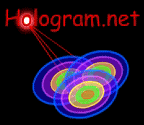Conflict Energy and the Resolution Processes

Conflict Overview
Everyone has their own energy, or personal power. Humans all have the same basic needs in life that motivate us to use our energy. Mazlow's pyramid of human needs, is a simplistic model of what motivates us to use our personal power.(Kreps, pg 158)
Humans are creators. Our energy is normally flowing in a positive direction, which we perceive will fulfill one of our needs. Power can be defined as "the capacity to act effectively" and "the ability to influence or control events."(Folger et. al.,pg.69)
The most basic form of communication is a response to stimulus in the environment.(Dance, cited in Zac-Dance, 1993) We process information about the stimulus and determine if the stimulus will block or enhance our energy flow. Once we calculate the probability of success, we begin reacting to the information and then direct our energy toward the intended goal. So, what we perceive we need, determines how we respond to, and control our environment. We use our personal power, through communication, to manipulate our environment to get what we need.
In a conflict situation, one person is perceived to have more personal power to obtain their needs than another. "If one party has more power than the other, the conflict is unbalanced; many of the choices the parties make are attempts to alter these imbalances."(Hocker & Wilmot,pg 87)
- Sam Leonard (1994) said that "Conflict is just an interface pattern of energies." Three types of energy - positive , negative, and neutral. Positive energy is released to create your goals. Negative energy is used to destroy or block others' opposing energy to try and gain your goals. Neutral energy is giving up the goal. Negative energy will accelerate as fast as positive energy.
